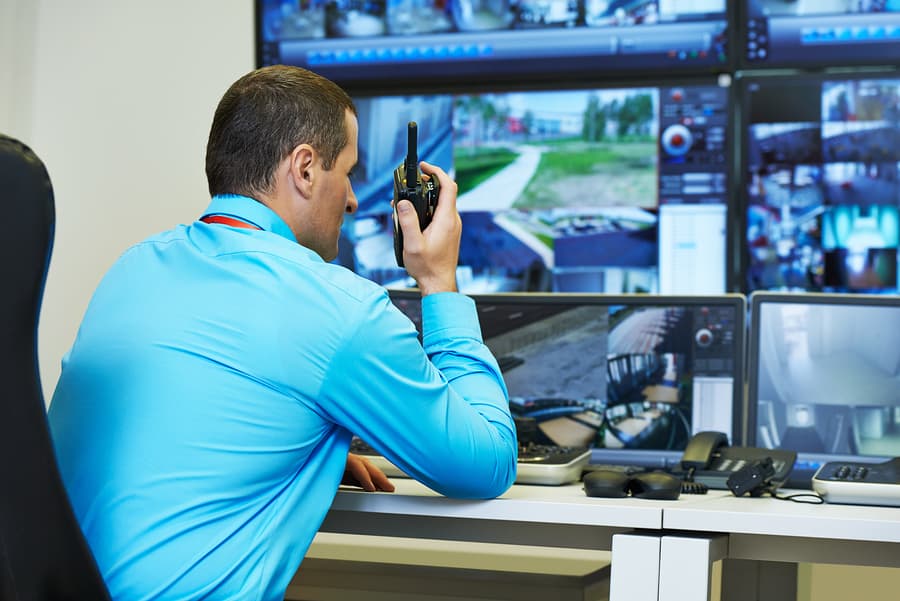Live camera monitoring is crucial in ensuring business continuity and security. It provides real-time insights and data to help businesses respond quickly to emergencies, minimize downtime, and improve overall performance.
What is real-time monitoring?
Real-time monitoring is a type of monitoring that provides immediate and continuous updates on the status of a system, process, or device. Data is collected and processed in real-time monitoring, allowing for immediate analysis and decision-making.
The purpose of real-time monitoring is to provide organizations with the ability to respond quickly to any issues or changes in their systems, processes, or devices, thereby reducing downtime and improving overall efficiency. This is especially important for critical systems, such as those used in healthcare, financial services, or manufacturing, where downtime can have significant consequences.
Real-time monitoring can be achieved through various technologies, including sensors, software, and networking technologies like the internet and Wi-Fi. These technologies enable real-time data collection, transmission, analysis, and response. The use of real-time monitoring has become increasingly widespread in recent years as organizations seek to improve the reliability and efficiency of their operations.
Definition of Live Monitoring System: A live monitoring system is a technology that continuously monitors and records the status of systems, processes, or conditions, providing real-time data and insights.
Importance of Business Continuity and Security: Business continuity and security are critical factors in the success of any organization. A live monitoring system helps businesses respond quickly to emergencies, minimize downtime, and remain secure against threats.
Purpose of the Study: The purpose of this study is to explore the impact of a live monitoring system on business continuity and security, examining the benefits, challenges, and best practices for implementation.
Benefits for Business Continuity
- Quick response to emergencies
- Improved business resilience
- Streamlined operations and increased productivity
- Reduced downtime and increased uptime
Benefits for Security
- Real-time threat detection and prevention
- Increased situational awareness
- Better risk management and mitigation
- Enhanced compliance with regulations and standards
Challenges
- Integration with existing systems and infrastructure
- Maintenance and upkeep requirements
- Privacy and data protection concerns
- Cost considerations
Best Practices
- Assessing business continuity and security needs
- Selecting the proper monitoring system
- Implementing a phased approach
- Ensuring user adoption and training
How does remote monitoring work?
Remote monitoring refers to remotely monitoring and managing devices, systems, and processes using technology such as the internet, Wi-Fi, or cellular networks.
Here's how remote monitoring works in general:
Data Collection: Sensors or other monitoring devices are placed on equipment or systems that need to be monitored. These devices collect data and send it to a central location.
Data Transmission: The collected data is transmitted over a network, such as an internet or cellular, to a remote monitoring system.
Data Processing: The remote monitoring system processes the data, checks for abnormalities, and alerts the relevant personnel if needed.
Data Analysis: The remote monitoring system provides real-time data analysis, trending, and reporting capabilities, enabling remote monitoring personnel to identify trends and problems in the monitored systems.
Remote Control: If necessary, remote monitoring personnel can take control of the monitored systems to make adjustments, initiate repairs, or carry out maintenance tasks.
Overall, remote monitoring allows organizations to monitor their equipment and systems remotely, improving efficiency and reducing downtime. It also enables organizations to respond quickly to issues, helping minimize any problems' impact on operations and ensuring business continuity.
Professional Brands Use in Remote Monitoring
Axis Communications: Axis Communications is a leading provider of network video solutions for professional installations. Their cameras offer high-definition video, night vision, and advanced features such as motion detection and intelligent video analysis.
Bosch Security Systems: Bosch Security Systems is a subsidiary of Robert Bosch GmbH and a leading provider of security and communications products and systems. Their video monitoring cameras offer high-definition, night vision, and intelligent video analysis capabilities.
Hikvision: Hikvision is a leading provider of video surveillance products and solutions. Their cameras offer high-definition video, night vision, and advanced features such as facial recognition and intelligent video analysis.
Wyze: Wyze is a brand of affordable smart home security cameras developed by Wyze Labs. The cameras offer high-definition video, night vision, and two-way audio and can be controlled through a mobile app.
These brands are widely used in professional video monitoring and surveillance applications and are known for their reliability and advanced features.
What are remote monitoring systems used for?
Remote monitoring systems are used for a variety of purposes, including:
Equipment and Machine Monitoring
Remote monitoring systems can monitor the performance and status of industrial equipment and machines, alerting operators to potential issues and reducing downtime.
Environmental Monitoring:
Remote monitoring systems can monitor environmental conditions, such as temperature, humidity, and air quality, and provide early warning of potential hazards.
Healthcare Monitoring
Remote monitoring systems can monitor patients' health in real-time, allowing healthcare providers to respond quickly to any changes in condition.
Energy Monitoring
Remote monitoring systems can monitor energy usage and performance, helping organizations reduce energy costs and improve sustainability.
Security Monitoring
Remote monitoring systems can be used for security purposes, such as monitoring access points, surveillance cameras, and alarm systems.
IT Infrastructure Monitoring
Remote monitoring systems can monitor the performance and availability of IT infrastructure, such as servers, databases, and networks, providing early warning of potential issues.
Conclusion
Implementing a live monitoring system can significantly impact an organization's business continuity and security. With real-time monitoring capabilities, organizations can respond quickly to emergencies, enhance their resilience, streamline operations, and improve their security posture.
While there are challenges to implementing a live monitoring system, such as integration, maintenance, and cost considerations, these can be overcome by following best practices such as assessing needs, selecting the right system, implementing a phased approach, and ensuring user adoption and training.
Ultimately, the benefits of a live monitoring system for business continuity and security far outweigh the costs, making it a valuable investment for organizations of all sizes.

Comments
Post a Comment